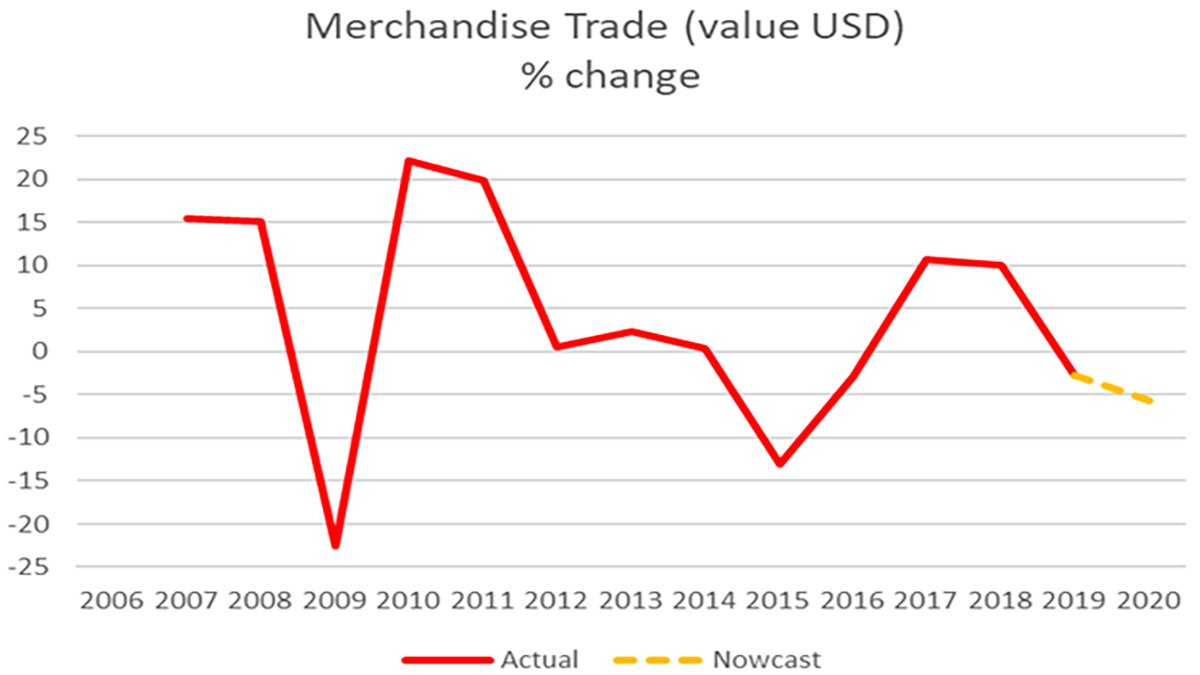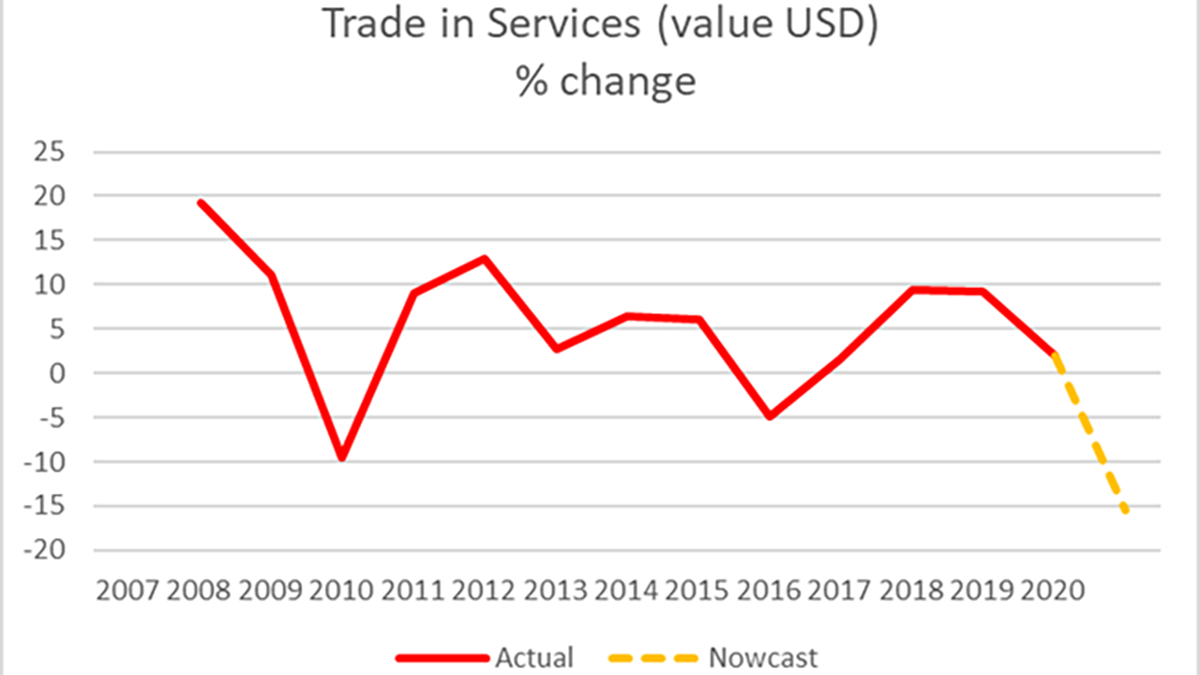Services sector remains hardest hit by the coronavirus pandemic, dropping to levels last seen in the 1990s, nowcasts from UNCTAD's 2020 Handbook of Statistics show.

According to UNCTAD's latest nowcasts (run on 8.12.2020), the value of global merchandise trade is predicted to fall by 5.6% in 2020 compared with last year. This would be the biggest fall in merchandise trade since 2009, when trade fell by 22%. This is a significantly more optimistic nowcast than only a few weeks ago when UNCTAD nowcasts were estimating a fall of 9%.
The nowcasts – data-led projections for the immediate future – were published today as part of UNCTAD’s comprehensive annual Handbook of Statistics for 2020, which presents the statistical landscape for 2019 with nowcasts for 2020.
The predicted decline in services trade is much greater, with services likely to fall by 15.4% in 2020 compared with 2019. This would be the biggest decline in services trade since 1990, when this series began. In 2009, following the global financial crisis, services trade fell by 9.5%.
UNCTAD’s quarterly International Trade in Services Bulletin, which contains the latest detailed information, shows that this plunge has been driven by a considerable decline in travel, transport and tourism activity.
The handbook usually presents a wide variety of statistics relevant to international trade and development for the preceding year and has recently included nowcasts to anticipate the figures for the year of publication.
The coronavirus pandemic however transformed business as usual in 2020, increasing demand for up-to-date figures on the economic impacts while also impacting statistical modeling.
“Unlike previous years however, the models that nowcast international trade and GDP had to grapple with some of the most unusual circumstances in living memory,” said UNCTAD’s chief statistician, Steve MacFeely. “So much so, the existing models broke down under the strain and had to be redesigned and rebuilt during the year.”
The nowcast figures are telling however and paint a picture of the schism that happened in trade in both goods and services as a result of the coronavirus pandemic, with the figures still trending downwards at time of publication (see figure 1).
“While the handbook maps and presents the situation for global trade in merchandise and services, maritime, population, and other economic trends in 2019, there is a more pressing need to nowcast for the economic impacts of the pandemic,” he said. Given the increased importance of timely data as a result of the COVID-19 economic fallout, the handbook has been supplemented by quarterly trade nowcasts.
These and other major trends in statistics relevant to international trade and development are depicted in UNCTAD's 2020 Handbook of Statistics, summarizing the broad spectrum of statistics maintained in the online database UNCTADstat.
Figure 1: Trade in merchandise and services nowcasts for 2020


A statistical picture of the world in 2019
The UNCTAD Handbook of Statistics 2020 provides a wide range of statistics and indicators relevant to the analysis of international trade, investment, maritime transport and development.
“Reliable statistical information is indispensable for formulating sound policies and recommendations that may commit countries for many years as they strive to integrate into the world economy and improve the living standards of their citizens,” MacFeely said.
The UNCTAD Handbook of Statistics and the UNCTADstat Data Center make internationally comparable sets of data available to policymakers, research specialists, academics, officials from national governments, representatives of international organizations, journalists, executive managers, and members of non-governmental organizations.
The 2020 edition also includes some new sub-annual maritime indicators (see chapter 5) and quarterly time series of world trade (see chapters 1 and 2).
In parallel to the printed document, UNCTAD is releasing the e-Handbook of Statistics 2020, a web-ready version of the report. The e-handbook is a fully interactive tool, including maps and charts, that allow readers to directly access the data from the UNCTADstat Data Center associated with each table or chart.
Additionally, updated factsheets of the main themes covered by the report will be available on the UNCTADstat page.


